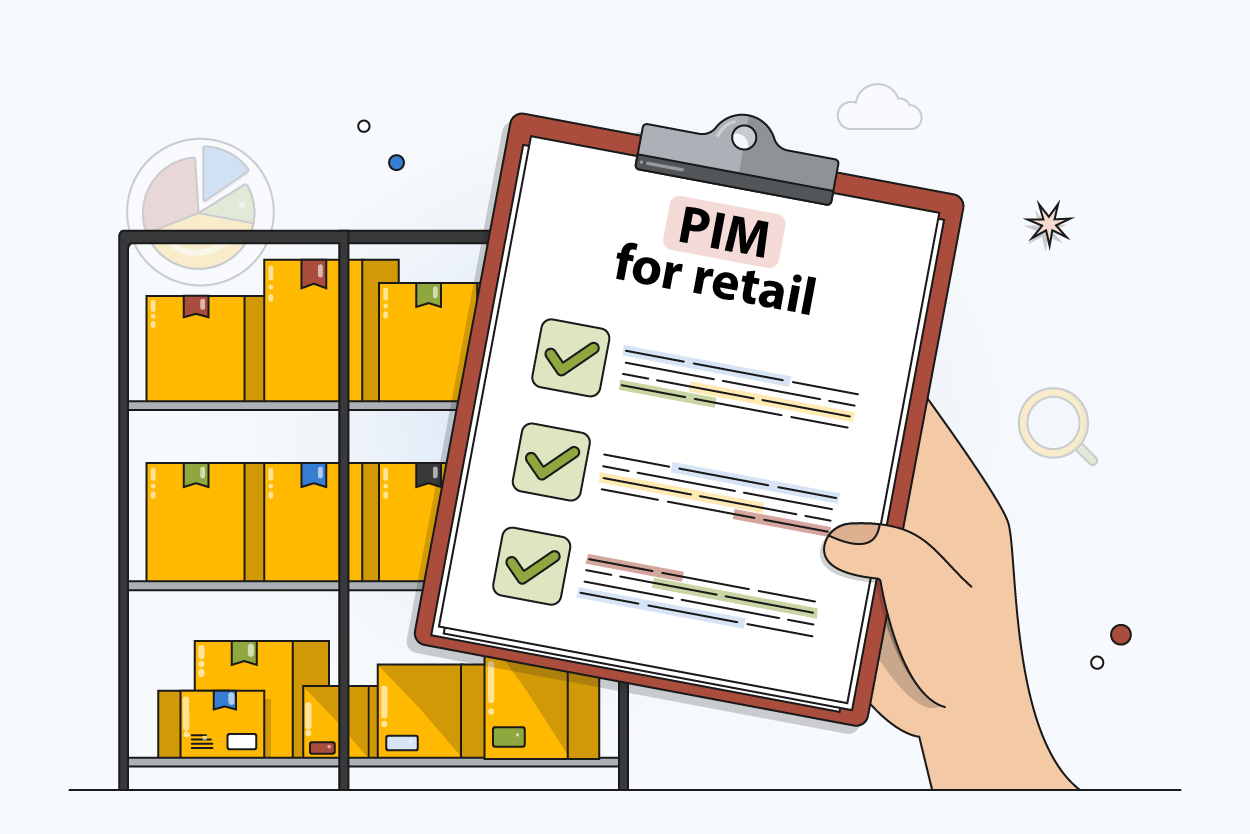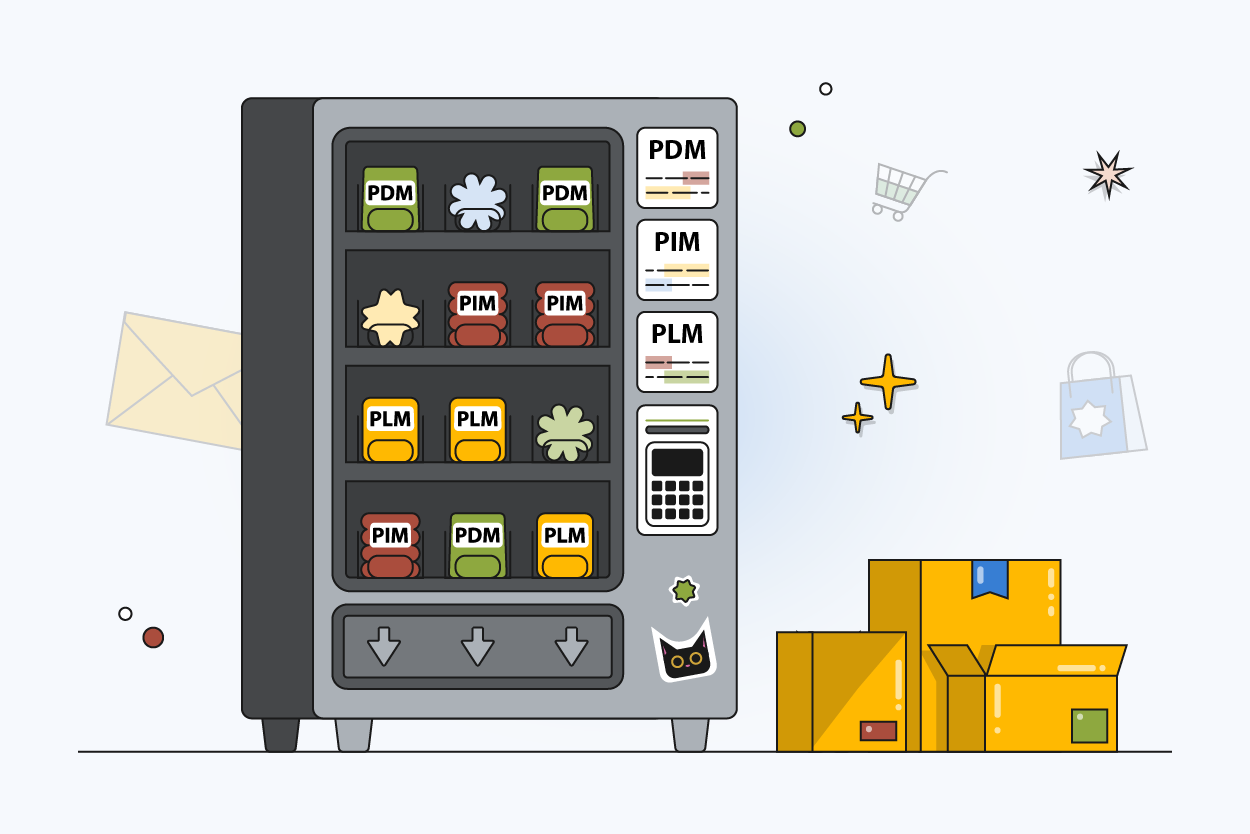PIM System Speed: A Comprehensive Guide to Enhancing Product Information Management
Author name: Mark Chickering

In today's fast-paced digital landscape, speed is not just a luxury but a necessity, especially when it comes to SaaS Product Information Management (PIM) systems. These platforms serve as the backbone for managing your product data, from basic descriptions to complex attributes. While many factors contribute to the effectiveness of a PIM system, speed stands out as a critical element that impacts multiple facets of its operation. This article will explore the first of four distinct areas where speed plays a pivotal role in PIM system and your technology ecosystem.
But why does speed matter so much? A slow PIM system doesn't just frustrate your team—it directly impacts your bottom line. When your product manager waits 5 seconds to load a product page, multiply that by 200 updates per day. That's nearly 17 minutes of pure waiting time daily, or over 70 hours per year per employee. Scale that across your team, and the cost becomes substantial. More critically, delayed data exports during peak sales periods can mean showing outdated prices or stock levels to customers—a mistake that drives them straight to competitors.
These 4 areas are:
- User Interface
- Data export, feeds and channels
- Real-time data availability
- Data Import
Each of these four areas has the potential to make or break a successful PIM implementation. All PIM implementations are limited primarily by underlying system design constraints. Speed is an easily identifiable and quantifiable metric.
User Interface: The Gateway to Efficiency
The user interface for managing and updating product data is the first point of contact between the managing team members and the PIM system. This is where product data is reviewed, edited, and updated. Additionally, it's the hub for defining omni-channels, data formats, field mapping, and calculated fields. A sluggish interface can be a significant bottleneck, affecting the productivity of team members who manage the PIM.
Imagine a scenario where it takes several seconds to update a single product attribute. Multiply that by hundreds or thousands of products, and you can see how a slow interface can lead to delays in product launches, product updates, and other critical business activities. In a world where time is money, a fast and responsive user interface is not just a convenience but a necessity.
We compared the page load times and lighthouse scores for three popular PIM Systems under identical network conditions. We selected two pages from each PIM system to be evaluated and then selected Lighthouse as the evaluation tool. The pages we tested in each PIM perform a similar function. The pages we selected for evaluation were:
- the default product listing page and
- the product detail page for the first product in the default product listing.
The PIM systems we tested are:
The Plytix dataset contained only 34 distinct SKU's. The Catsy dataset contained approximately 195,000 Unique SKU's. The PIMinto dataset similarly contained over 194,000 SKU's. We expected Plytix to perform better than Catsy and PIMinto due to the significantly smaller SKU count in the Plytix dataset. That was not the case. Lighthouse showed PIMinto to have the best results with a performance score of 81 and a speed index of 2.1s. The score was drastically higher than the slower performing toss-up between Catsy and Plytix. They had respective performance scores of 36 and 52. Likewise, speed indexes for the runners-up were significantly slower at 3.8s and 5.0s. It generally took twice as long to open the product index page in Catsy and Plytix than it did in PIMinto PIM. Slow page loads and page performance are in our opinion, productivity killers.
We did not stop our test with the product index page. Many sites can have one or two slow pages but still provide a positive user experience. We wanted to test a page that users would most likely access often while maintaining the product information stored in the PIM. We selected the product detail page. This is where product data can be viewed, or modified and a user would vbe required to access this page in order to generally update or manage a SKU's data from the PIM's user interface.
Again, we expected Plytix to perform better than Catsy and PIMinto due to the significantly smaller SKU count (only 36 SKU's) in the Plytix dataset. Again that was not the case. Lighthouse showed PIMinto had significantly better performance results with a Lighthouse performance score of 91 and a speed index of 1.6s. These scores were dramatically higher than Catsy and Plytix, with respective scores of 35 and 56. Likewise, speed indexes were significantly slower for Catsy and Plytix at 3.8s and 4.4s. It took more than twice as long to load the product page in Plytix than it did to open the product page in PIMinto. PIMinto PIM was significantly faster and the clear winner in this test. Slow page loads and slow page performance directly impact user productivity and increase the time spent performing a task. Tasks that take longer to perform cost more money.
The pages we have looked at so far in this article are used by internal brand staff to maintain the product data in the PIM. The only time loss and user experience impact was that of company employees. None of the pages tested were or ever would be accessible to the general public. Performance on these pages would not impact end-consumer brand experience. We set out to identify PIM pages that were accessible to the general public, and that would directly impact the consumer's brand experience. We were able to identify and compare actual Brand Portal pages from actual PIM customers. Again, there was a clear winner among the sites we tested. It is important to note that we could only test two of the PIM systems. We were unable to find a readily identifiable brand portal driven by the third PIM provider. PIMinto again stood out as the best performer in our test. The screenshots of the results are below:
Data Exports, Feeds, and Channels: The Lifeline of eCommerce
When it comes to the operational efficiency of a PIM system, the speed of data exports is a cornerstone that cannot be ignored. After years of working in eCommerce and product management, we have been repeatedly disappointed by the sluggish performance of various PIM systems. This section aims to shed light on why data export speed is so crucial.
The Essence of Data Exports
The primary reason we put data into a PIM system is to efficiently distribute it across various platforms and channels. Whether it's eCommerce websites, omni-channels, brand portals, price files, even physical retail stores, the speed at which this data can be exported is vital. Slow exports can result in outdated or stale information being displayed, which is detrimental in a competitive market. Failed exports while much more significant that failed exports also result in delays.
The Real-World Impact
Slow data exports have lead to a host of problems. For instance, during promotional events like Black Friday, when prices and stock levels can fluctuate rapidly, a delay in data export can result in incorrect pricing or stock information being displayed. This not only affects sales but can also lead to customer dissatisfaction and harm the brand's reputation. Retaildive.com reports that more than 30% of consumers have a banadoned a cart due to poor product descriptions and that 87% of consumers would be very unlikely to make a repeate purchase with a retailer that provided inacurate product information.
The Role of Feeds and Channels
Data feeds and channels are the conduits through which exported data flows. In a fast-paced eCommerce environment, these must be as agile as possible. Slow feeds can cause significant delays in updating product listings across multiple platforms. This is particularly problematic when dealing with high-traffic volumes on eCommerce websites where even a minute's delay can result in lost sales opportunities. Many newer platforms connect to PIM data in real-time, older technology platforms rely on feeds to update local product data cached or stored on local infrastructure. Slow feeds result in updates that take hours to transfer and update product data.
The Need for Consistency
Another critical aspect is the need for consistency in data exports. Inconsistent data can wreak havoc on an eCommerce platform, leading to issues ranging from incorrect product categorization to faulty search results, even feed failure. Speed and consistency must go hand-in-hand to ensure that the data exported is not only fast but also accurate and reliable.
Real-Time Data Availability: A Game-Changer
One of the leading reasons our team launched PIMinto, was the need for real-time product data availability and fast data exports to omni-channels and feeds. In competitive markets, where pricing and product features can change in the blink of an eye, a delay of even a few hours delay in data publication can be a significant disadvantage. PIMinto was designed to be extremely fast, with no delay between editing and the availability of product data for publication with fast feed generation and content delivery. This becomes especially critical when considering headless eCommerce.
What is headless eCommerce?
The term "headless eCommerce" has become a buzzword in the industry, often used to signify a modern, flexible, and scalable approach to online retail. Headless eCommerce is a paradigm shift in the way online retail operates, focusing on decoupling the front-end presentation layer from the back-end data management and business logic. However, not all systems that claim to be "headless" truly embody the core principles of a headless architecture. For more information on headless eCommerce please see our article titled "Core Principles of Headless eCommerce." Real time data availability requires that updates and changes to product data are propagated immediately. For a PIM system to support real time data fetch the API must not be limited usingAPI rate limiting. API rate limiting is a mechanism used by some PIM providers to restrict the amount of API calls that can be made and amount of data that can be transferred from a PIM system within a specified period of time.
Advantages of Fast Real-Time Data from PIM
- Data Consistency: One of the biggest challenges in eCommerce is maintaining data consistency across multiple channels. By fetching data in real-time from a centralized PIM system, you ensure that all channels are displaying the same, most current information.
- Speed and Efficiency: If the PIM is designed for high-speed data retrieval, as discussed in my personal experience with systems like PIMinto, this architecture can be incredibly efficient. It eliminates the need for data replication across multiple systems, reducing the chances of data becoming stale or outdated.
- Scalability: As your product offerings grow, so does the complexity of managing that data. A PIM system should be designed to handle this complexity, making it easier to scale your operations without worrying about data management bottlenecks.
- Customization and Personalization: With the front-end decoupled and data fetched in real-time, it's easier to implement custom features, layouts, and personalization algorithms. You can change the front-end without affecting the integrity of your product data.
- Reduced Complexity: Managing data in one centralized system (the PIM) rather than duplicating it across various platforms simplifies data governance, reduces errors, and makes it easier to maintain.
Data Import Speed: The Unsung Hero of PIM Systems
Often overshadowed by the more visible aspects of PIM systems like user interface and data exports, data import speed is an unsung hero that deserves its moment in the spotlight. Importing data from external sources is a foundational step that sets the stage for all subsequent operations within the PIM system. However, it's not as straightforward as it may seem, and our experience has shown just how critical this aspect can be.
The Queue Bottleneck
In many PIM systems, imported data is placed in a processing queue, which can create delays. These delays can be particularly problematic when you're dealing with large datasets comprising tens even hundreds of thousands of SKUs. These bottlenecks can disrupt the entire workflow, leading to a ripple effect that impacts data accuracy, team productivity, and, ultimately, customer experience across connected systems.
The Complexity of Data Sources
Another factor that can affect import speed is the complexity and diversity of data sources. Whether it's spreadsheets, flat files, or direct feeds from suppliers, each data source comes with its own set of challenges. Formats may differ, data may be incomplete, and there may be inconsistencies that need to be resolved. All of these add to the time it takes to import data into the PIM system.
The API Advantage
To mitigate these challenges, it is beneificial to consider updating data using the PIM's API to write individual SKU attribute data directly into the system. This approach has several advantages. First, it bypasses the queue, allowing for immediate data availability. Second, it provides greater control over data quality, as you can utilize web hooks to update data as changes occur in external systems instead of waiting for bulk uploads to be processed. This method is beneficial for businesses that require real-time updates or have fluctuating inventory levels that need to be reflected promptly.
Strategic Planning for Data Import
Given the complexities and potential delays associated with data import, strategic planning is crucial. Batch imports during off-peak hours, prioritizing high-importance SKUs, and regular monitoring can go a long way in optimizing import speed. In our experience, a well-thought-out data import strategy can significantly improve the overall efficiency and effectiveness of a PIM system.
Speed as Your Competitive Advantage
The need for speed and real-time capabilities in Product Information Management (PIM) systems has never been more critical. As we've explored in this article, the impact of speed is multifaceted, affecting everything from the user interface to data exports, real-time data availability, and data import processes.
Starting with the user management interface, we've seen how a responsive and efficient UI is a necessity for team productivity. Delays in updating product attributes can have a cascading effect on total cost of ownership and other critical business activities.
When it comes to data exports, feeds, and channels, speed is the linchpin that holds the entire eCommerce ecosystem together. As someone who has experienced the pitfalls of slow PIM systems, I can attest to the importance of fast and consistent data exports, especially in high-traffic scenarios. The ability to quickly disseminate accurate product information across multiple platforms is crucial for maintaining a competitive edge.
Real-time data availability is another game-changer, particularly in competitive markets where even a slight delay can be detrimental. The need for real-time capabilities was one of the driving forces behind the development of PIM systems like PIMinto, designed to meet the demands of modern eCommerce.
Lastly, the often-overlooked aspect of data import speed plays a vital role in the overall PIM ecosystem. While it may not be as immediately visible as other aspects, slow data imports can create bottlenecks that affect the entire product information lifecycle. Strategies like using APIs for direct SKU data input can mitigate these challenges, offering a more efficient approach to data management.
As businesses evolve in an increasingly digital and competitive environment, the need for high-speed, real-time capable PIM systems will only grow. These systems are not just supporting actors but critical assets in the complex theater of online commerce. Whether you're considering adopting a PIM system or looking to optimize your existing one, keep in mind these four key areas where speed and real-time capabilities can make or break your success.
By understanding and addressing each of these aspects, businesses can build a robust, agile, and future-proof PIM system that not only meets but exceeds the demands of modern eCommerce.
Modified on: 2023-09-27



